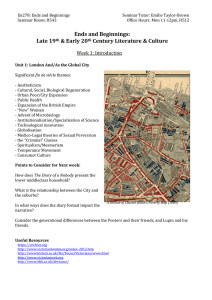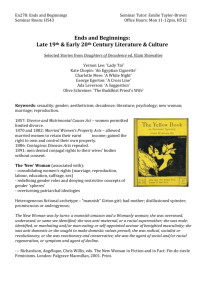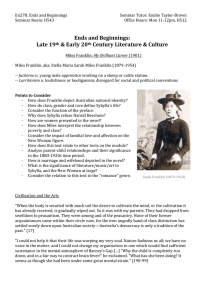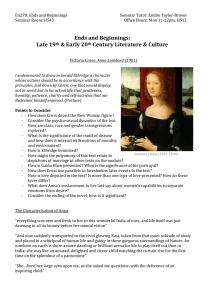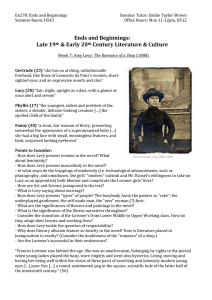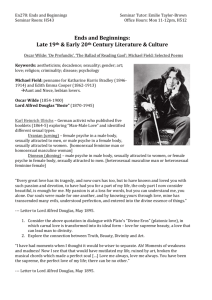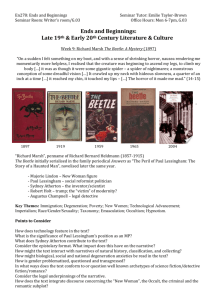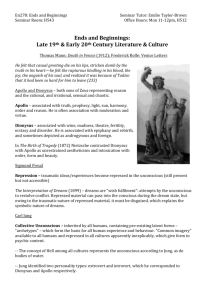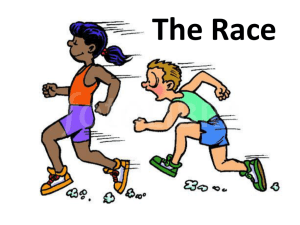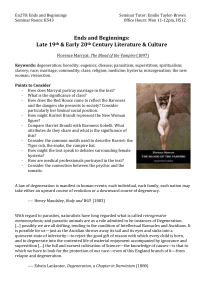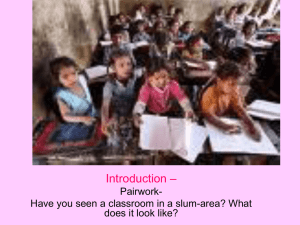Maggie, A Girl of the Streets
advertisement
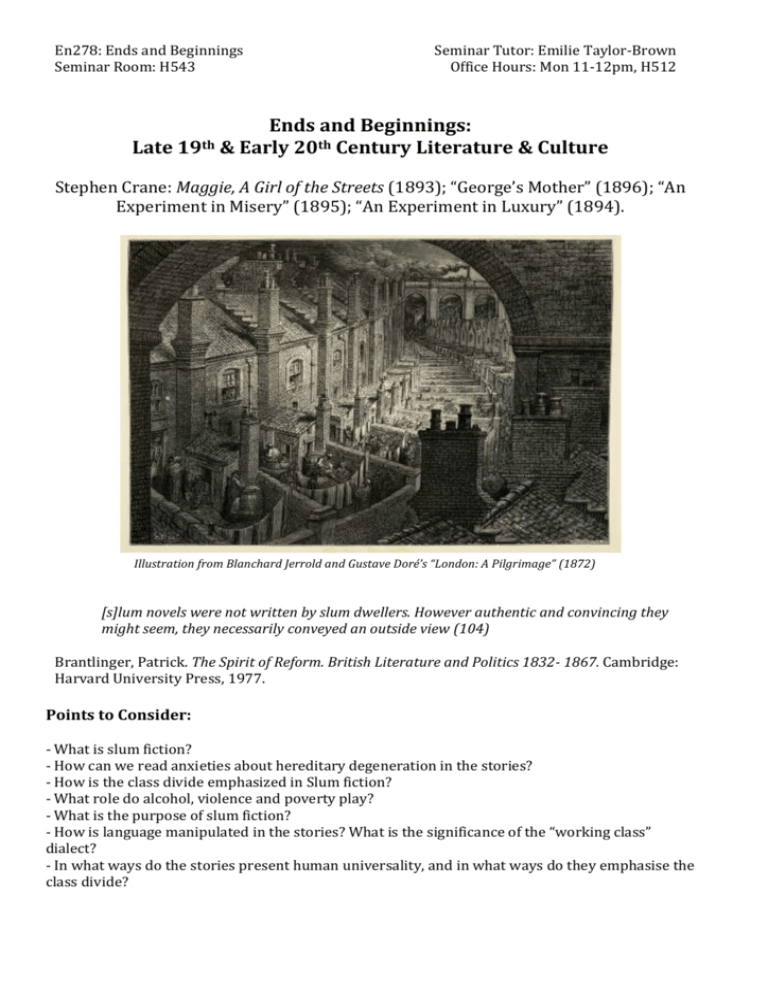
En278: Ends and Beginnings Seminar Room: H543 Seminar Tutor: Emilie Taylor-Brown Office Hours: Mon 11-12pm, H512 Ends and Beginnings: Late 19th & Early 20th Century Literature & Culture Stephen Crane: Maggie, A Girl of the Streets (1893); “George’s Mother” (1896); “An Experiment in Misery” (1895); “An Experiment in Luxury” (1894). Illustration from Blanchard Jerrold and Gustave Doré’s “London: A Pilgrimage” (1872) [s]lum novels were not written by slum dwellers. However authentic and convincing they might seem, they necessarily conveyed an outside view (104) Brantlinger, Patrick. The Spirit of Reform. British Literature and Politics 1832- 1867. Cambridge: Harvard University Press, 1977. Points to Consider: - What is slum fiction? - How can we read anxieties about hereditary degeneration in the stories? - How is the class divide emphasized in Slum fiction? - What role do alcohol, violence and poverty play? - What is the purpose of slum fiction? - How is language manipulated in the stories? What is the significance of the “working class” dialect? - In what ways do the stories present human universality, and in what ways do they emphasise the class divide? En278: Ends and Beginnings Seminar Room: H543 Seminar Tutor: Emilie Taylor-Brown Office Hours: Mon 11-12pm, H512 Once inside it widens, but only to make room for a big box-like building with the worn and greasy look of the slum tenement that is stamped alike on the houses and their tenants… […] These people are not fit to live in a nice house. Riis, Jacob. How the Other Half Lives. New York: Charles Scribner’s Sons, 1890. (31;32) In Maggie, Pete displays what anthropologist Michel Taussig calls the “mimetic faculty”, the urge not just to “copy” and “imitate”, but to “yield into and become [the] Other” […] Pete practises a kind of “mimetic excess” made possible by modernity, with its proliferation of images and goods, his “miming body” exhibits “an ineffable plasticity in the face of the world’s forms and forms of life”. Lawson, Andrew. “Class Mimicry in Stephen Crane’s City” American Literary History 16.4 (2004): 596-618. (597). “[Maggie] wondered if the culture and refinement she had seen imitated, perhaps grotesquely by the heroine on the stage, could be acquired by a girl who lived in a tenement house and worked n a shirt factory.” (p.38) - How does modernity contribute to class mobility? - What is the significance of aesthetic experience and personal/national identity in the stories? [Maggie] worries that Pete’s “aristocratic person” might “soil”, given the “disorder and dirt” of her home. […] What is remarkable about Maggie is that respectability is shown to have infiltrated the darkest recesses of the slum. […] [In the final chapters Maggie] navigates an urban geography of decreasing taxable values, to end in a space of industrial production and debased consumption. To make this journey is also to travel backwards in evolutionary time, to a meeting of a man…a lumpen proletarian who is also a lower form of life, his body shaking “like that of a dead jelly fish”. Lawson, Andrew. “Class Mimicry in Stephen Crane’s City” American Literary History 16.4 (2004): 596-618. (597; 603;610). “She did not feel like a bad woman. To her knowledge she had never seen any better.” (Maggie) [Crane] does not portray the streets of lower New York as sites of moral infestation that his characters wisely avoid or resist, or conversely, that insidiously poison them, or slowly wear down their spiritual immune systems. He does not adopt the metaphors of moral En278: Ends and Beginnings Seminar Room: H543 Seminar Tutor: Emilie Taylor-Brown Office Hours: Mon 11-12pm, H512 epidemiology […] Rather [he] portrays the tenement neighbourhood as hostile and threatening and shows his character steeling himself against it. Jimmie’s inner experience in the slums is not one of temptation, sin and guilt; it is one of insult, self-defence and belligerence. Gandal, Keith. “Stephen Crane’s “Maggie” and the Modern Soul” ELH 60.3 (1993): 759-785. (765) En278: Ends and Beginnings Seminar Room: H543 Seminar Tutor: Emilie Taylor-Brown Office Hours: Mon 11-12pm, H512
